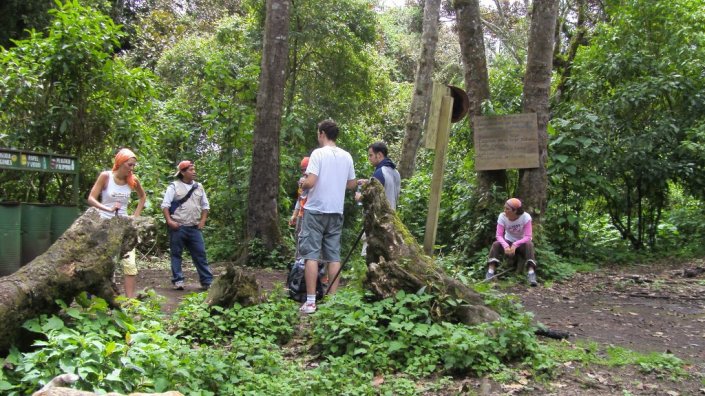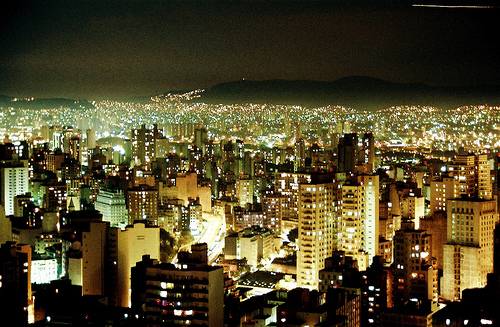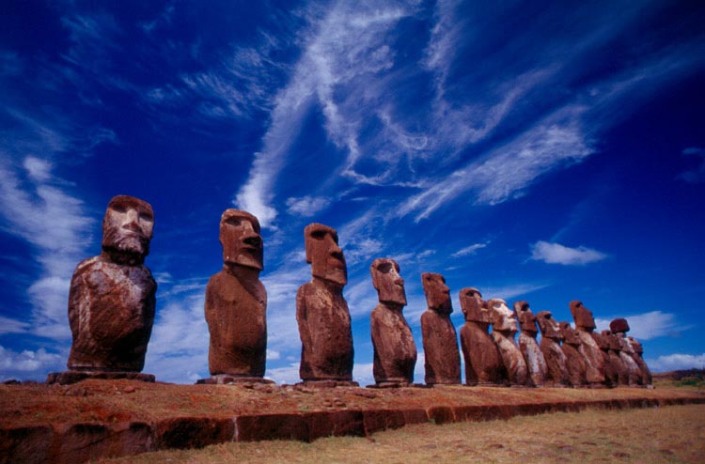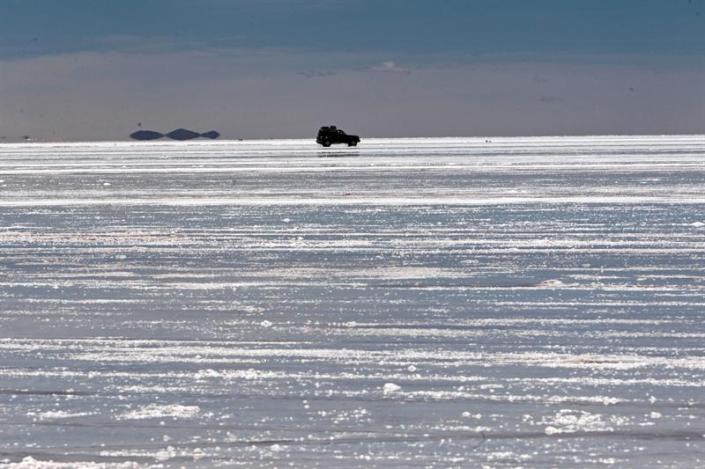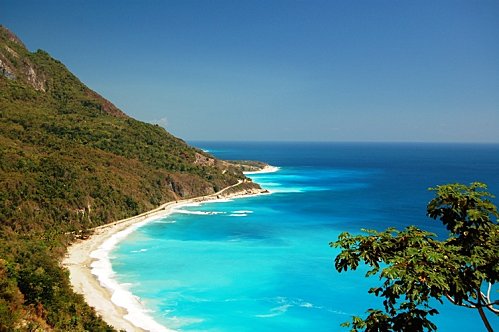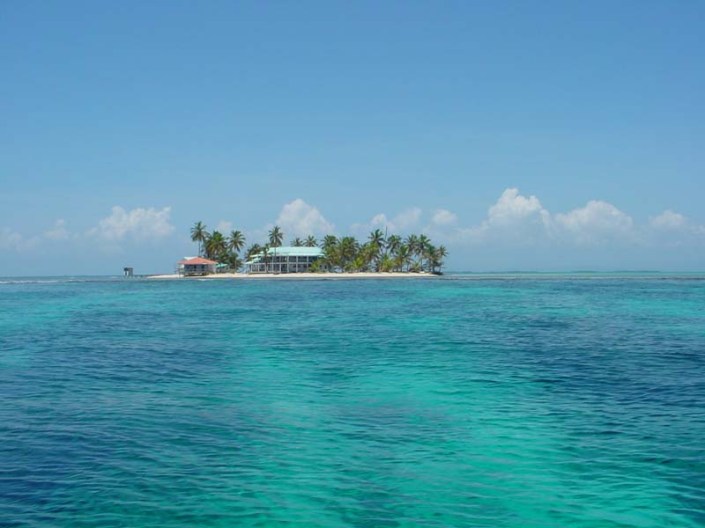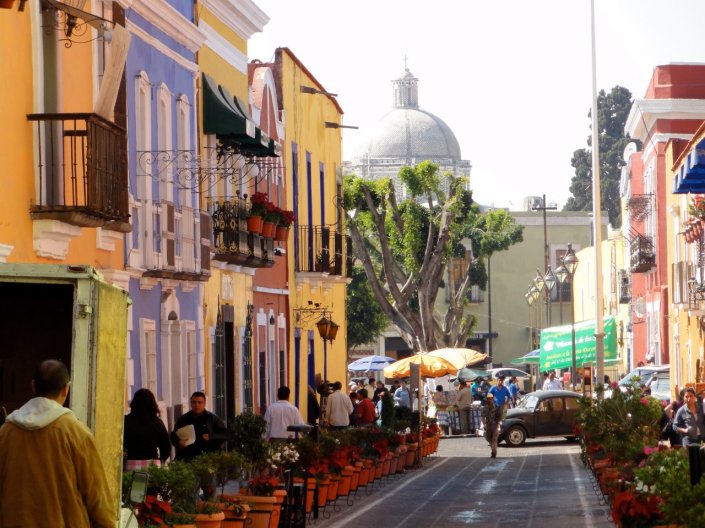brasil
Qué llevar al Amazonas. Consejos de equipaje / What to pack for the Amazon Rainforest. Packing tips
Viajar a la selva amazónica puede ser complicado en términos de equipaje. La logística es complicada así que te esperan múltiples tipos de transporte: jeeps , camionetas , canoas, barcas a motor, etc, y, por supuesto, mucho camino andando. Las altas temperaturas y los mosquitos tampoco hacen las cosas fáciles!
Esta lista recopila las cosas más esenciales que recomiendo llevar si te vas de viaje a la selva y tiene como objetivo evitar el común “Se me ha olvidado esto o aquello”. Espero que sea útil para los intrépidos viajeros.
Traveling to the Amazon Rainforest can be challenging in terms of luggage. You’ll be taking all kinds of transportation systems: jeeps, vans, canoes, motor boats, etc and you will be walking a lot too. High temperatures and mosquitoes don’t make things easy either!
This list compiles the most essential stuff I recommend packing for a trip to the jungle and has the goal to avoid the common “I wish I had brought this or that”. I hope it’s helpful for my fellow travelers.
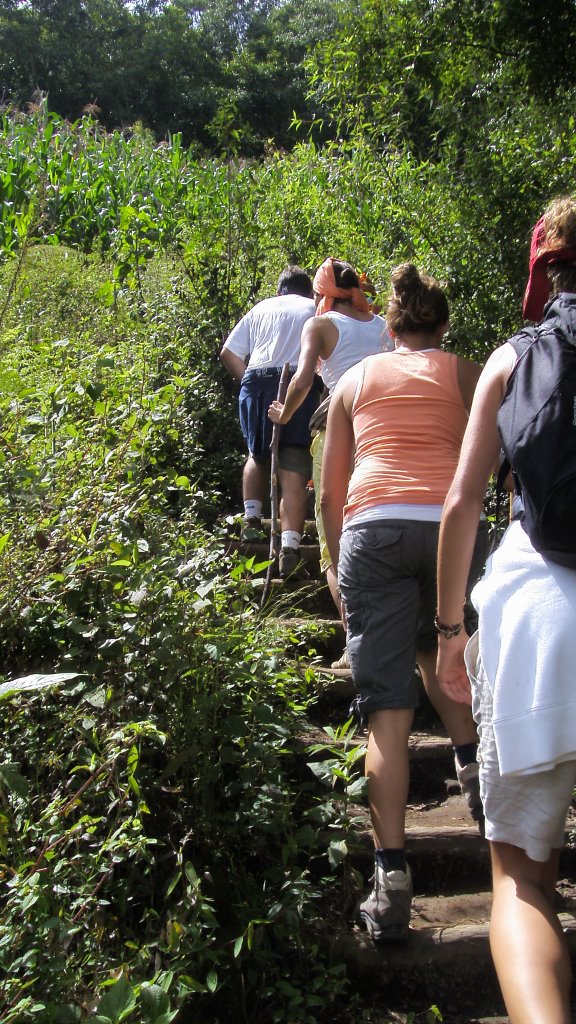
1 . La propia maleta o bolsa
Mientras que las mochilas pueden ser algo incómodas para hacer y deshacer, son sin duda, lo más recomendado para ir a la selva, pues son la mejor manera de transportar tus cosas distancias cortas. Una bolsa blanda con asas puede servir también pero trata de evitar maletas de ruedas a no ser que sepas con certeza que alguien te podrá ayudar con el transporte. Una mochila pequeña de día también es útil para las excursiones.
1. The bag itself
While backpacks can be bit uncomfortable to pack and unpack they are indeed the most recommended for the Amazon as you may have to carry your stuff short distances. A soft bag with handles may do the job too but try avoiding rolling suitcases unless you know for sure someone will be able to help you carry it. A small daypack it’s also useful for the excursions.
2. Camisetas de manga larga
Hace calor, sí, pero cuando se trata de evitar las picaduras de mosquitos, no importa. Y recuerda que las plantas del Amazonas también pican por lo que quieres evitar rozarlas con la piel! Lleva por lo menos 2 o 3 camisas o camisetas de manga larga que sean transpirables pero no muy finas ya que los mosquitos también pican a través de la tela!
2. Long sleeve shirts
It’s hot yes, but when it comes to avoiding mosquito bites it doesn’t matter. And in the Amazon plants also bite so you don’t want to touch them with your skin! Bring at least 2 or 3 long sleeve shirts that are breathable and not tight as mosquitoes will bite you through the fabric!
3. Pantalones
Una vez más, largos y transpirables como las camisetas. Yo recomendaría al menos 2 en caso de que se te mojen o ensucien. Los que tienen una cremallera que se transforman en pantalones cortos son útiles aunque a mi personalmente no me gustan …
3. Pants
Again, long and breathable as the shirts. I would recommend at least 2 in case they get wet or very dirty. The ones with a zipper that transform into shorts are useful though I personally don’t like them …
4. Impermeable o poncho
Puede hacer frío por la noche y sin duda puede llover. En los lodges pueden prestarte uno pero es mejor estar preparado.
4. Water resistant jacket or poncho
It can cool down at night and it can certainly rain. Lodges may lend you one but better to be prepared.
5. Zapatos resistentes
No es necesario llevar botas de montaña ya que no vamos a hacer escalada. Un par de zapatillas básicas que no te importe estropear o mojar valen. No te olvides de 3-4 pares de calcetines y póntelos siempre porque hay muchos mosquitos e insectos merodeando por el suelo a los que les encantan los pies.
5. Sturdy shoes
I don’t think you need hiking boots as you are not doing heavy climbing. A pair of basic sneakers that you don’t mind getting ruined will do the work. You should pack two 3-4 pairs of socks as you certainly don’t want mosquitoes and other insects on the ground to climb up your foot.
6. Cámara de fotos y funda
Incluso si pesa un poco no te quieres perder momentos y fotos en la selva. Es una oportunidad para hacer fotos increíbles!
6. Camera and waterproof case
Even if it’s a bit heavy you don’t want to miss picture moments in the jungle, it’s an opportunity to take amazing shots once in a lifetime!
7. El repelente de insectos MÁS fuerte
Sí, el más fuerte. Sí, el olor no es sexy pero tiene que contener 100 % de DEET (dietil – metatoluamida ) y tienes que al menos rociarte 3-4 veces al día. Como consejo, no te compres nada más light, los mosquitos son monstruos y pueden transmitir enfermedades.
7. THE strongest bug spray repellant
Yes, THE strongest. Yes, the smell is not sexy but it has to contain 100% DEET (diethyl-metatoluamide) and you have to at least spray yourself 3-4 times a day. As an advice, don’t go for anything lighter, those mosquitoes are monsters and they may transmit a good deal of diseases.
8. Las consecuencias: la crema contra el picor
Lleva crema con cortisona como el Polaramine. Muchas picaduras de mosquitos te pueden dar fiebre (hablando por propia experiencia…)
8. The aftermath: the anti itch cream
Get some of the hard stuff too such as cortisone as many mosquito bites can give you a fever and make you feel really sick (talking on my own experience..)
9. Protector solar de factor alto
Yo diría que por lo menos 30, no subestimes el poder del sol en el Amazonas.
9. Sunscreen with high SPF
I would say at least 30, do not underestimate the power of the sun in the amazon.
10. Accesorios de cabeza y el pelo
No te olvides un sombrero de ala ancha o una gorra. Una vez más, el sol es más fuerte de lo que crees. El clima es bastante pegajoso también, así que lleva también gomas de pelo y cinta
10. Head and hair accessories
Don’t forget a brimmed hat or a baseball cap. Again, the sun is stronger than you think. The climate gets quite sticky too so I would also pack a bunch of hair ties and a headband
11. Gafas de sol
11. Sunglasses
12. Artículos de aseo naturales
No te olvides que estás en el Amazonas y todo va a terminar en la naturaleza
12. Environmentally friendly toiletries
Don’t forget you are on the Amazon and everything will end up in nature
13. Un botiquín de primeros auxilios
Debe incluir como mínimo, tiritas, tabletas para filtrar agua, analgésicos, antibióticos para cortar y curar la diarrea
13. A basic first aid kit
Should include at least band aids, water filtration tablets, pain killers, anti biotics for diarrhea
Espero que os haya sido útil. Os dejo un enlace con nuestra selección de los mejores lodges en la selva!
Hope you liked it. Here is a link to our selection of rainforest lodges in South America!
Expedición: Iguazú y Selva Misionera / Expedition: Iguazu and Misiones Jungle
Hace dos semanas nos fuimos de viaje a la zona de Misiones, al norte de Argentina. En nuestro viaje visitamos las maravillosas cataratas de Iguazú, las reducciones jesuíticas y la selva misionera o paranaense. La mayoría del turismo se concentra en Iguazú pero merece la pena introducirse más allá para comprender mejor el legado tanto histórico como natural de este pulmón del planeta. Un patrón en común guía nuestro viaje: los guaraníes.
Nuestra primera parada fueron las reducciones (o misiones) jesuíticas. Aunque las mejor conservadas están en Paraguay (Jesús de Taverangué y Trinidad), la larga cola de la aduana no nos permitió acceder y visitamos 3 de las ruinas que se encuentran en territorio argentino, San Ignacio Miní, Loreto y Santa Marta.
Two weeks ago we took a trip to the area of Misiones in northern Argentina. On our trip we visited the amazing Iguazu Falls, the Jesuit missions and the Misiones jungle. Most tourism is concentrated in Iguazu but it’s worth it to travel further to better understand the historical and natural legacy of this lung of the planet. A common pattern in our journey: the Guarani people.
Our first stop was the Jesuit reductions (or missions). Although the best preserved are in Paraguay (Jesus de Taverangué and Trinidad), because of the long line at customs we couldn’t access the country and visited 3 of the ruins found in Argentine territory: San Ignacio Mini, Santa Ana and Loreto.
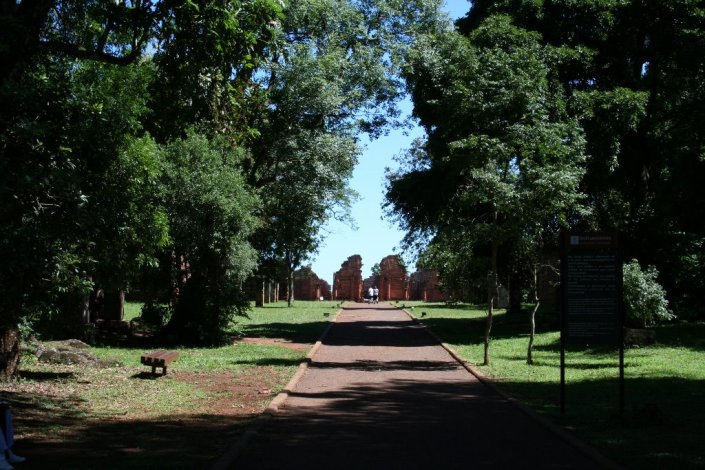
La presencia jesuítica duro 160 años (1609-1769) y se considera un momento apasionante en la historia. Así, los pueblos de indios guaraníes que vivían en pequeños grupos se reunieron por iniciativa de los jesuitas para formar asentamientos de unos 5000 indios cada uno. Las Reducciones eran verdaderos pueblos “civilizados” que tenían organizados su subsistencia, su organización social y cultural así como su espiritualidad.
Los jesuitas aportaron una especial sensibilidad hacia muchos aspectos de la cultura e identidad guaraní, que trabajaron por defender y perpetuar y que se convirtieron en eje de la concepción de las Reducciones. Muchos sabréis bien de lo que hablo por la película “La Misión” pero es impresionante ver en persona lo que queda de estos asentamientos. Emanan espiritualidad como pocos otros sitios.
Nuestra siguiente parada fue Iguazú. Yguazú en guaraní significa aguas grandes. ¡Y tanto! Se forma en la confluencia de los ríos Iguazú y Paraná donde se encuentran los que sin duda son unos de los más bonitos saltos de agua del planeta. Constante debate hay entre brasileños y argentinos en la disputa de quien tiene las mejores vistas. Os recomiendo visitar los dos porque cada uno es especial. Desde Brasil, se tiene una visión mucho más panorámica así como una vista única de la Garganta del Diablo. Desde Argentina, parece que estás literalmente dentro de la catarata. Como actividades, se pueden realizar paseos en lancha bajo los saltos y caminatas por senderos apreciando algunos animales de la selva. Os recomiendo la lancha del lado argentino que va hasta la Isla de San Martín pues está menos masificado y la vista es espectacular.
The Jesuit presence lasted 160 years (1609-1769) and is considered an exciting time in history. The Guarani Indians used to live in small groups and, following the Jesuit initiative they formed settlements of around 5000 indians each. Reductions were real “civilized” colonies that had organized their subsistence, social and cultural organization and spirituality.
The Jesuits brought a special sensitivity to many aspects of Guarani culture and identity, working to defend it and perpetuate it and became the axis of the conception of the Reductions. Many will know well what I’m talking about with the movie “The Mission ” but it’s impressive to see in person what remains of these settlements. It emanates spirituality as few other places.
Our next stop was Iguazu. Yguazú in Guarani means “big waters”. And quite big! Is formed at the confluence of the Iguazu and Parana rivers where you can certainly find one of the most beautiful waterfalls in the world. Constant debate between Brazil and Argentina in the dispute over who has the best views. I recommend you visit both because each one is special. From Brazil , there is a more panoramic view and a unique view of the Garganta del Diablo . From Argentina , it’s like literally being inside the waterfall. As activities, you can take boat rides under the waterfalls and walks the trails while appreciating some jungle animals. I recommend on the Argentine side the boat going to the Isla San Martin as it is less crowded and the view is spectacular.
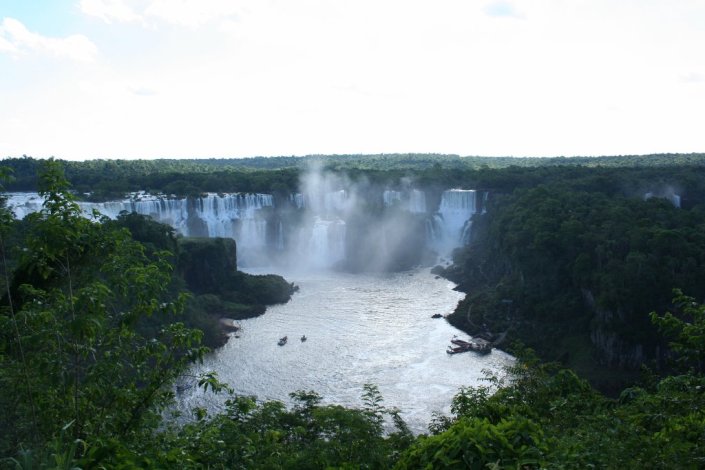
Nuestra última fue Don Enrique Lodge, un Lodge de selva extremadamente acogedor y comprometido con la conservación medioambiental en la frontera este de Misiones donde pasamos dos días inolvidables. Observa de cerca como era. Bachi, la dueña de Don Enrique, nos cuenta como sólo queda un 5% de la selva paranaense y ese 5% está aquí, es la Reserva de la Biosfera Yabotí, donde se encuentra el hotel.
Our last stop was Don Enrique Lodge, a jungle lodge extremely welcoming and committed to environmental conservation on the eastern border of Misiones where we spent two unforgettable days. Take a close look at what it was like. Bachi, the owner of Don Enrique, tells us how only 5% of the original Paranaense o Misiones jungle is left and that 5% is here, the Yabotí Biosphere Reserve, where the hotel is located.
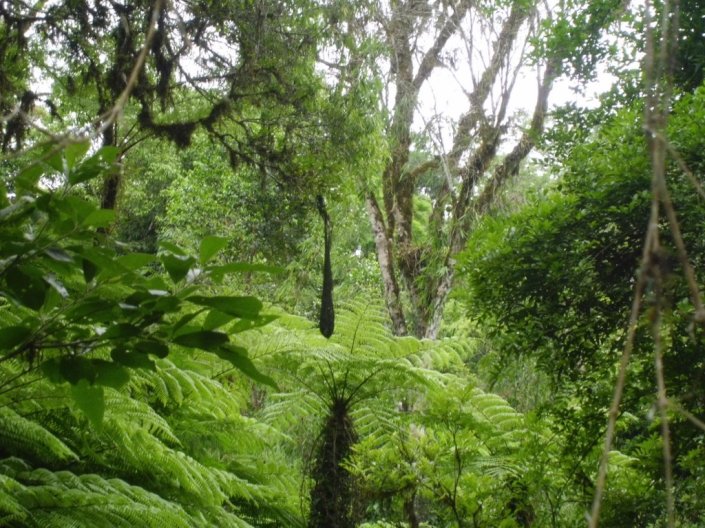
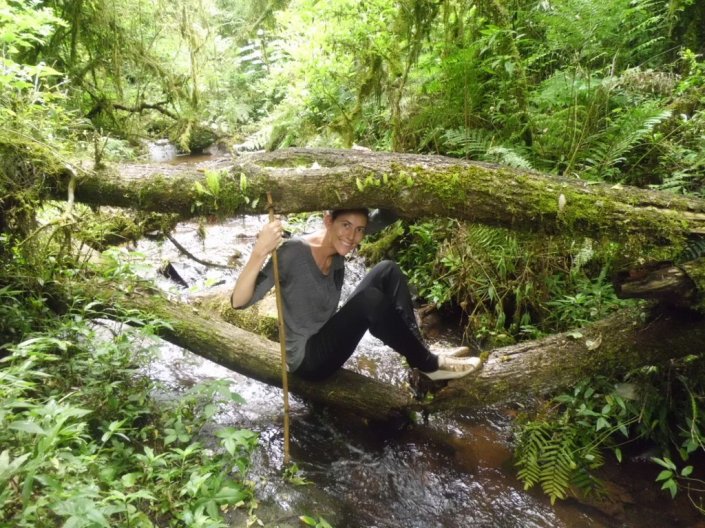
“A día de hoy, se estima solo queden unas 200 familias de indios guaraníes”, nos cuenta Eliseo de Don Enrique. Luchan incesantemente por vivir en la selva, donde siempre lo han hecho, bajo sus costumbres y reglas. Tuvimos la oportunidad de visitar una de sus aldeas y de conocer su modo de vida cerca. Nos cantan una canción que nos pone los pelos de punta. Desde los tiempos de los jesuitas, la música ha sido una de sus principales virtudes.
“Today, it is estimated that only 200 Guarani Indian families remain,” says Eliseo the Don Enrique guide. They fight constantly to live in the jungle, where they always have, under their traditions and rules. We had the opportunity to visit one of their villages and learn about their way of life. They sing a song that leaves us shivering. From the time of the Jesuit settlements, music has been one of their main virtues.
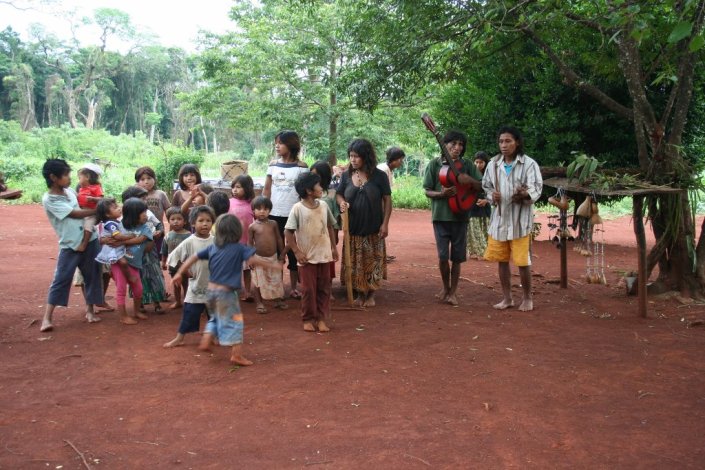
- ← Previous
- 1
- 2
- 3
- Next →
